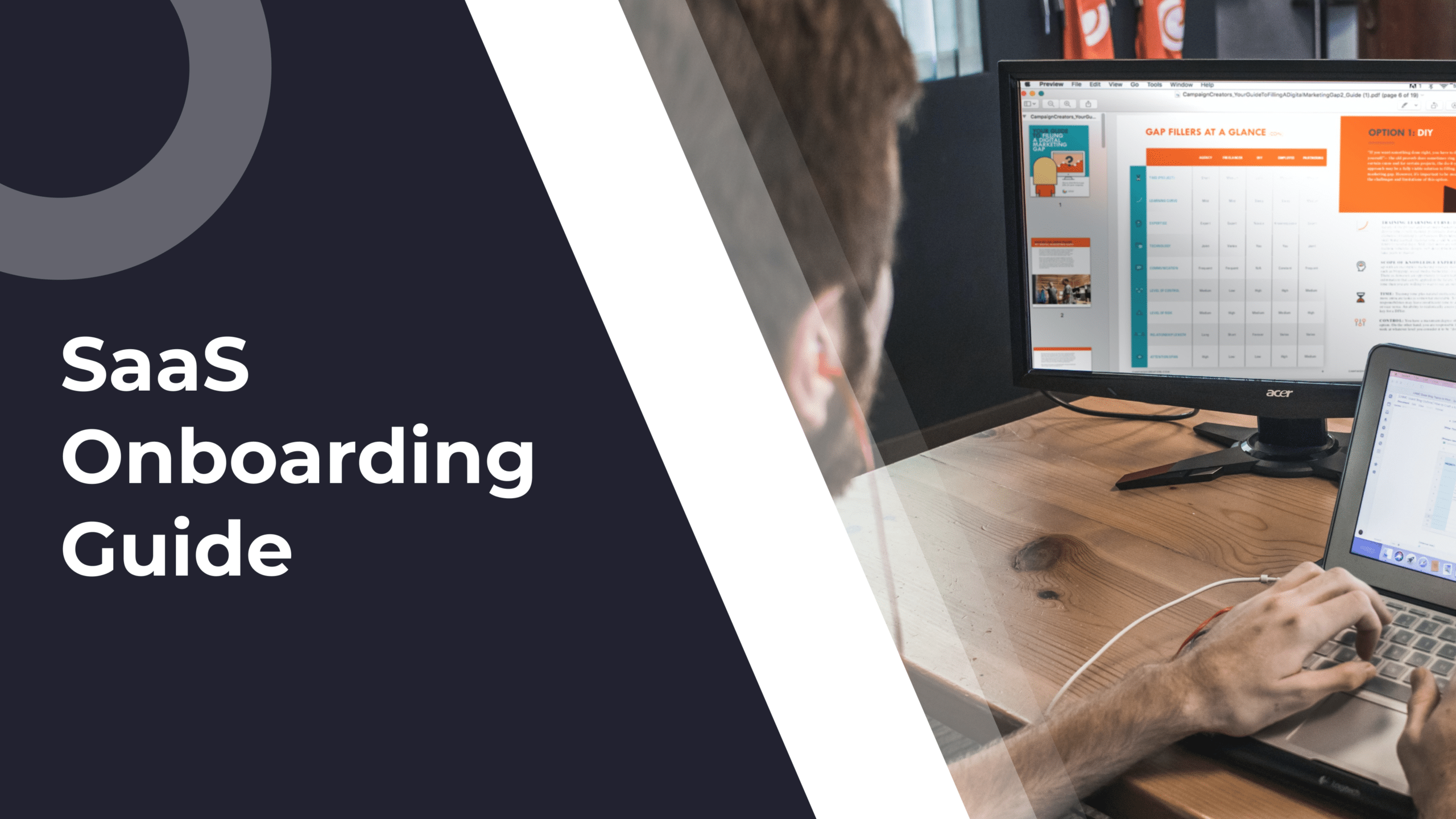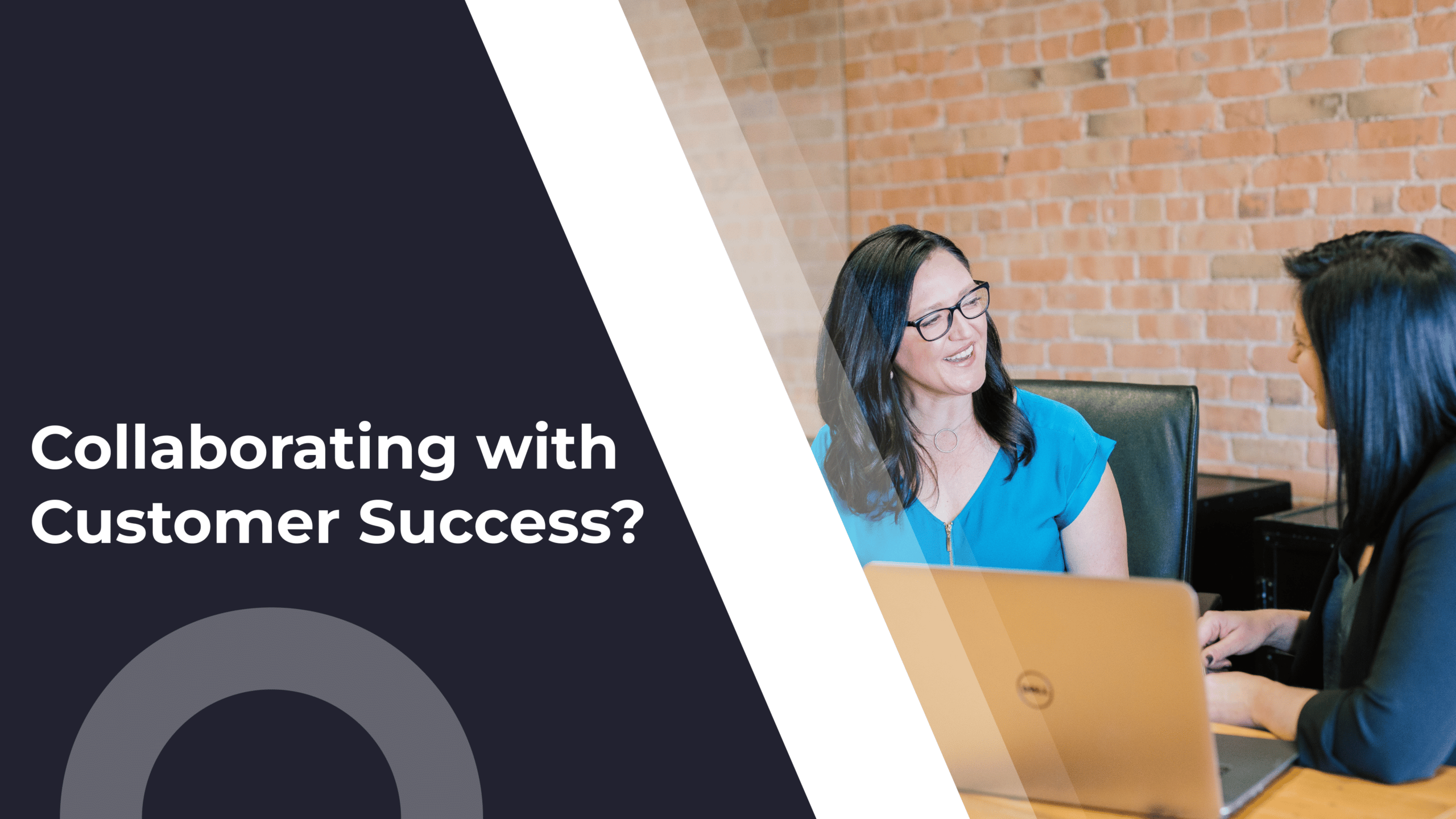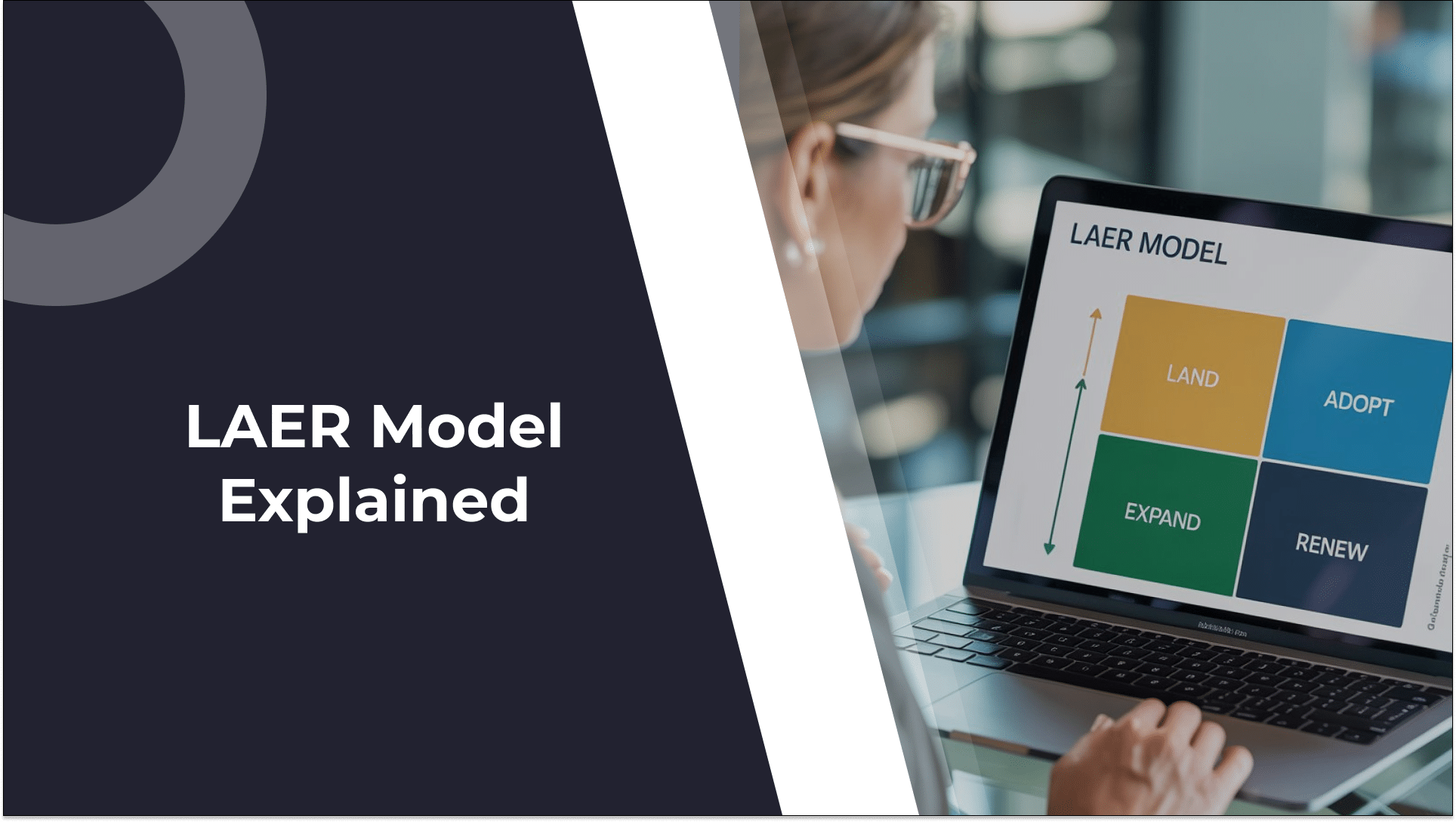The relationship between account management, sales, and success has become significantly more well-defined in recent years.
Consequently, so have the two main tools used for customer engagement, the customer relationship management (CRM) and customer success platforms (CSP).
All three roles deal with customer service in one way or another, yet their specific tasks couldn’t be more distinct.
That’s why a CRM will never be enough for customer success. In today’s article, I’m going to explore why, based on my experience as Head of CS and our customers’ testimonies as to their difficulties using CRMs for CS.
What’s the Main Difference between a CSP and a CRM?
To figure out the main difference, let’s first talk about each platform:
A CRM, or customer relationship management platform, is a software product that helps one organize and manage their contacts, sales opportunities, and customers. These solutions are typically employed by sales teams or organizations, providing a well-structured hub for their interactions, communications, and outreach initiatives.
Recent stats about CRMs show:
- 4 in 10 companies reported 11–20% higher revenues after CRM rollout, and 89% saw a revenue bump (Freshworks / Forrester Survey).
- Most CRM adopters enjoy roughly a 21–30% increase in sales revenue post-implementation (Nucleus Research).
A CSP, or customer success platform, is a software product that helps companies monitor their customers’ journey, usage, and health, allowing for lower churn rates, increased retention and loyalty, and more data-led and purposeful upsell and expansion workflows. CSPs are typically the primary tool used by customer success managers to monitor, engage, and assist their assigned customers.
Recent stats about CSPs show:
- SaaS firms with a formal CS team (and platform) enjoyed ~5 percentage points higher renewal rates than peers without one (Forrester).
- ROI calculators project large paybacks: e.g., 150–400% ROI over the first 6–12 months (The CS Cafe)
CRM vs CSP – Side by Side Comparison
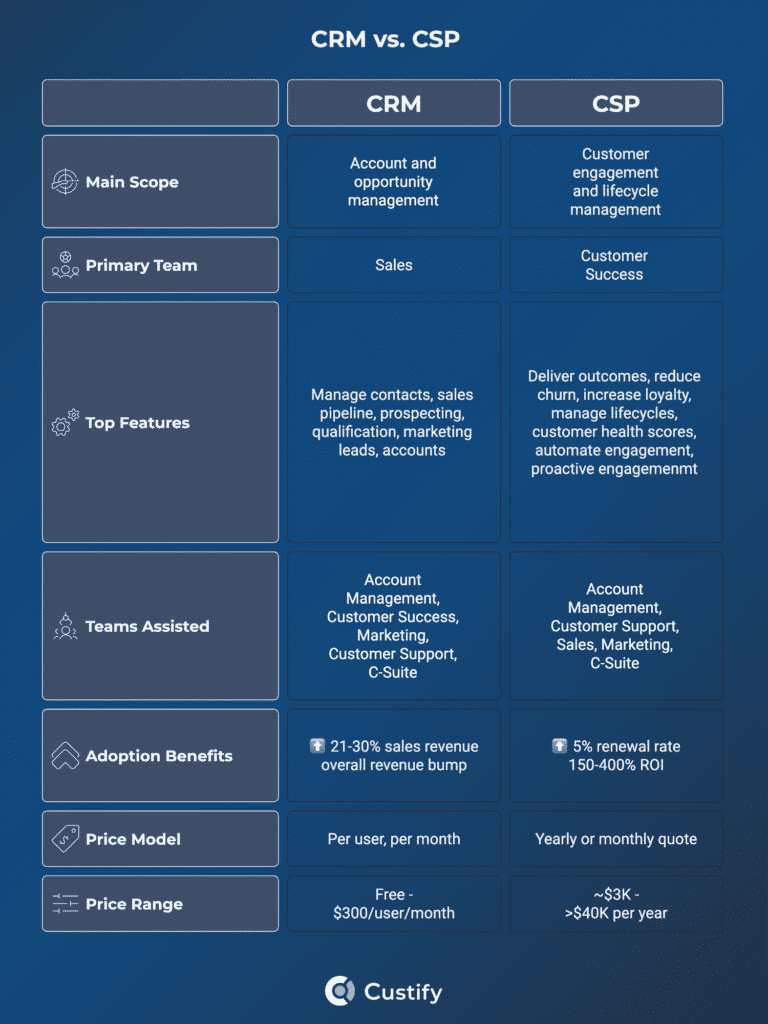
Can a CRM Do What a CSP Does?
To answer the question directly – no, not really. You can attempt to do some of the things usually left to the CSP, but the result will always be suboptimal simply because CRM platforms are not designed for the same thing as CSPs.
In fact, many senior CSMs who come to us requesting help already have such an implementation – a mishmash of CRM workflows, emails, Google Drive folders, and random spreadsheets. This mix drags their entire workday and leaves them overworked, stressed, and underperforming.
When you’re in that position, just about anything would be better. For most CSMs, though, a fully-functioning, purpose-built CSP is the dream. Being able to automate, reduce busywork, and keep an eye on customers proactively without having to dig through ancient emails can be a lifesaver, as Stijn Smet, Head of Customer Success at Whale can attest:
So at the end of the day, a CRM will only ever be something to assist a CSM, and could never work as a replacement for a CSP.
Following is an illustration of the decision framework for choosing between a CRM and a CSP, to help clear things up. Below it, I’ll highlight some key things CSPs can do that CRMs either struggle with or are simply not designed to do.

Top Things You Cannot Do in Customer Success with a CRM
1. In-Depth Tracking of Customer Behavior Inside the Product
A proper CSP integrates directly with your software product to obtain real-time usage data based on your users’ behavior. That data is then neatly arranged in your customer 360 view or whatever dashboard you prefer. The result is a fully customizable “mission control” where CSMs can track customer behavior, allowing for things like:
- Tracking onboarding progress
- Monitoring product and feature adoption
- Identifying friction points in the customer journey
- Determining moments when the customer is at risk of churn
- Finding upsell opportunities
These are just some of the ways customer behavior tracking works inside a CSP. The insights you glean from a CSP simply cannot be obtained through a CRM. The two are distinct tools, and while they may aid the lead CSM, the ways in which they do so are vastly different.
Example:
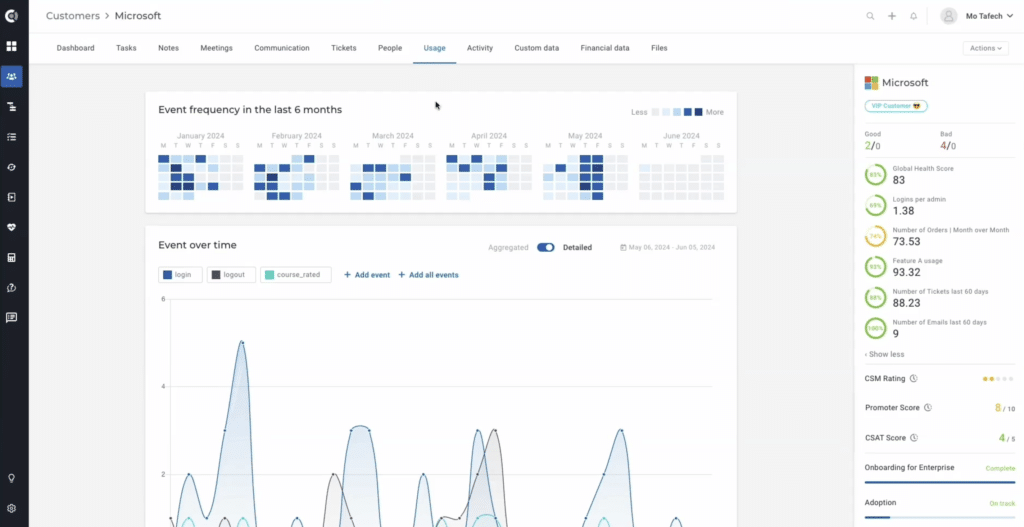
In the example above, we can see a dashboard for an example company – Microsoft – tracking their users’ behavior inside the product. Just at a first glance, we can see their product usage over time, CSAT score, onboarding and adoption progress, as well as an overview of their health scores.
2. Create and Monitor Customer Health Scores
Speaking of health scores, that’s another important feature that CSPs have over CRMs. Specifically, most CSPs allow for the creation of custom metrics specific to each customer or group of customers that will tell you specifically how that customer is doing.
These health scores naturally have impact and weighting settings, and are color-coded, typically showing up on your customer success dashboard (such as in the example above), allowing you to quickly spot any that go in the red.
Example:

In this screenshot, the example client isn’t doing so well. Their health scores are in the yellow, and they’re showing clear signs of a slow onboarding. However, the assigned CSM rated them a 4/5, which means they may be on the right track, and the health scores are lower for a good reason (delayed implementation, preplanned time off, etc). Customer health scores paint a good picture of where the client is, and with the additional context provided by the CSM, we can then decide what the next steps should be.
3. Automate Customer Engagement Based on Key Success Metrics
One of these next steps could involve creating an automation flow to send a few emails to customers who look unengaged or like they’re about to churn, like in the example in the screenshot above.
Low engagement, especially in the initial stages of a customer’s journey, means they haven’t reached the value realization stage, and therefore have one foot out the door. It’s a critical moment for any SaaS customer – and it’s the point where you should be reaching out.
Here’s where a CRM just won’t cut it:
You’ll need to automatically determine the moments when customers walk down the path to churn and immediately trigger an automatic flow that sends them emails, knowledgebase pages, training videos, or a simple check-in message on Slack. A good CSP can handle all of those steps with ease – what’s more, a great one will use AI to help you build the automation.
Example:
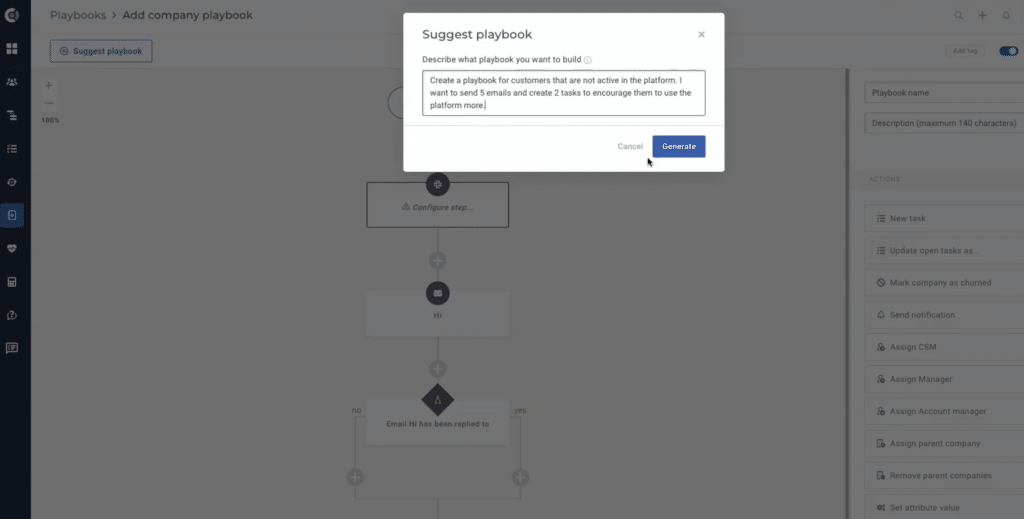
In the example above, we’re asking the AI built into the Custify CSP to generate a playbook (automation flow) for inactive customers. The goal is to engage them with a series of emails and assign internal tasks to follow up.
4. Design Lifecycles and Track Customers Moving through Them
Since CRMs are not designed to monitor customer lifecycles and their activity within the app, they typically don’t have advanced features to help you do that. CSPs, on the other hand, often have built-in lifecycle features to track specific parts of the customer journey.
With a CSP, you can create and monitor lifecycles for:
- Customer onboarding
- Product adoption
- Feature adoption
- Customer retention
- Customer expansion
- Any other sub-stage of the customer journey you want tracked
Example:

Here you can see all enterprise customers who’ve entered the onboarding stage. The lead CSM in this case would be able to see that 6 are behind in their onboarding, while 4 are stuck, requiring them to step in.
5. Proactively Manage and Increase Expansion
Contrary to popular belief, CSPs aren’t just designed for churn reduction. It’s more accurate to say they’re tools for delivering value at scale to customers. That value delivery, of course, comes with a few caveats. For one, delivering true customer outcomes leads to increased retention and loyalty, and then any value you’re able to add on top of that can lead to significant gains in expansion revenue.
While CRMs can be great at helping these expansion efforts, the addition of a CSP allows you to:
- Proactively identify customers that are ideal upsell or cross-sell candidates
- Determine what types of features or add-ons can be upsold to each customer
- Find the perfect moment to present them with an offer
- Draft the right messaging by looking at specific account signals
- Prevent downgrades and encourage upsells during a price change
Example:

The automation flow in this example automatically checks if a self-service customer’s plan has been upgraded from Trial to Basic. If they haven’t reached the Basic level of usage, the automation adds a note to the user for the CSM to check in and attempt to get them over the finish line and grow their MRR.
6. Personalize Dashboards, Reports, and Customer Portals for QBRs / EBRs
Last but often one of the most important ways a CSP can help where a CRM cannot is with QBRs, EBRs, or other customer check-ins. CSPs such as Custify give you the option to create custom dashboards, reports, and shareable customer portals that you can utilize in your customer meetings to look as professional as possible.
Customer portals are fully brandable and customizable pages that you can use to pinpoint customer tasks, progress, KPIs, and lifecycle stages. Oftentimes, customers stop being engaged with your tool before they get to see the true value it can bring. A customer portal is the perfect tool to reengage that client and attempt to get them on the right track.
Example:
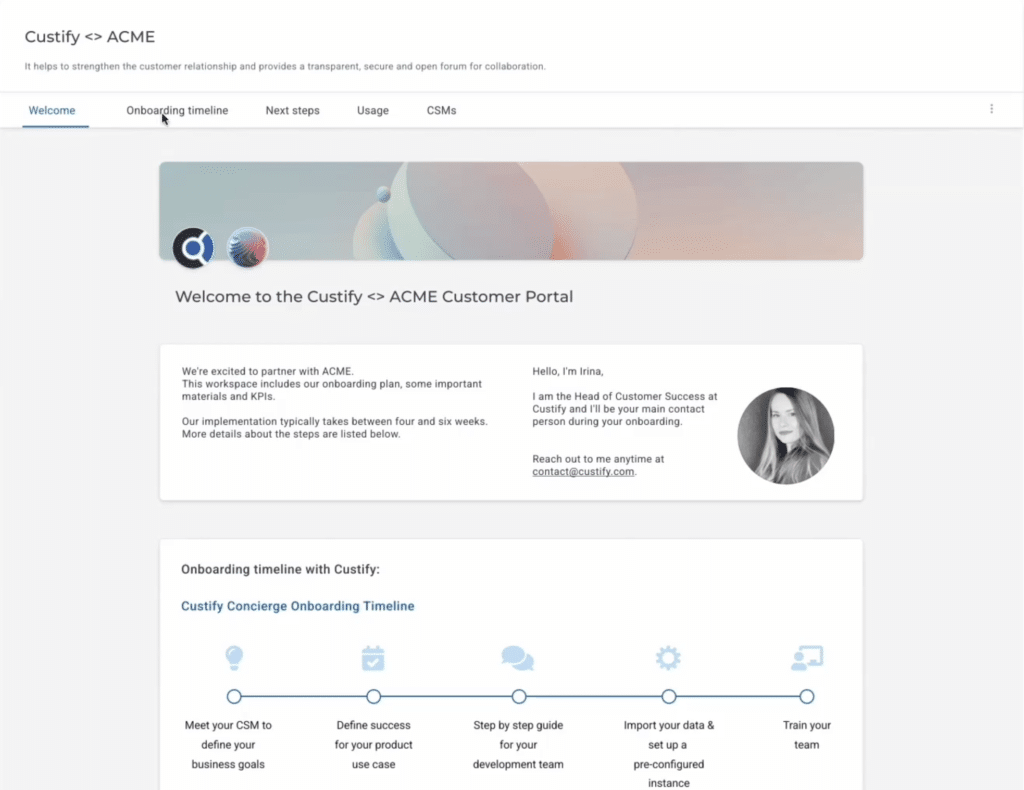
An example portal showing the onboarding process for a new client, including all the steps they need to go through before full implementation of their CSP.
FAQs about CRMs for Customer Success
1. Which to get first as a new SaaS company, a CRM or a CSP?
Most CSPs wouldn’t admit this, but we recommend starting with a CRM. Why? Because you’ll need a place to organize your contacts, sales opportunities, outreach initiatives, and initial customers before you need a place to monitor and engage with them. It’s as simple as that.
Sure, if you can afford both, it’s better to get a CSP and a CRM at the start. Otherwise, go for a CRM, but be strategic about your customer success initiatives – just because you’re not investing in a CSP early on in your SaaS doesn’t mean you shouldn’t have a CS strategy and a lead CSM.
2. When should a B2B SaaS choose a dedicated CSP over extending its CRM?
The clear sign you need something more than a CRM is when you’re getting lost in emails, spreadsheets, CRM contacts, and all the other tools you use. If you’re constantly wishing for a better way to handle customer relations, then a CSP is the right choice.
3. What CSP works best with HubSpot and why?
Most CSPs work great with HubSpot. That said, Custify fully supports integration with the Hubspot CRM, allowing you to import contacts, companies, notes, meetings, tickets, and more.
Furthermore, Custify exists both as a separate platform and as an app inside the HubSpot ecosystem. This lets you use the two together in Enhance mode, which syncs data between your backend and both platforms, allowing you to work with a primary source of truth.
Last, but maybe most importantly, Custify customers have a dedicated CSM that can help them with their setup, ensuring that both the CRM and the CSP work together seamlessly.
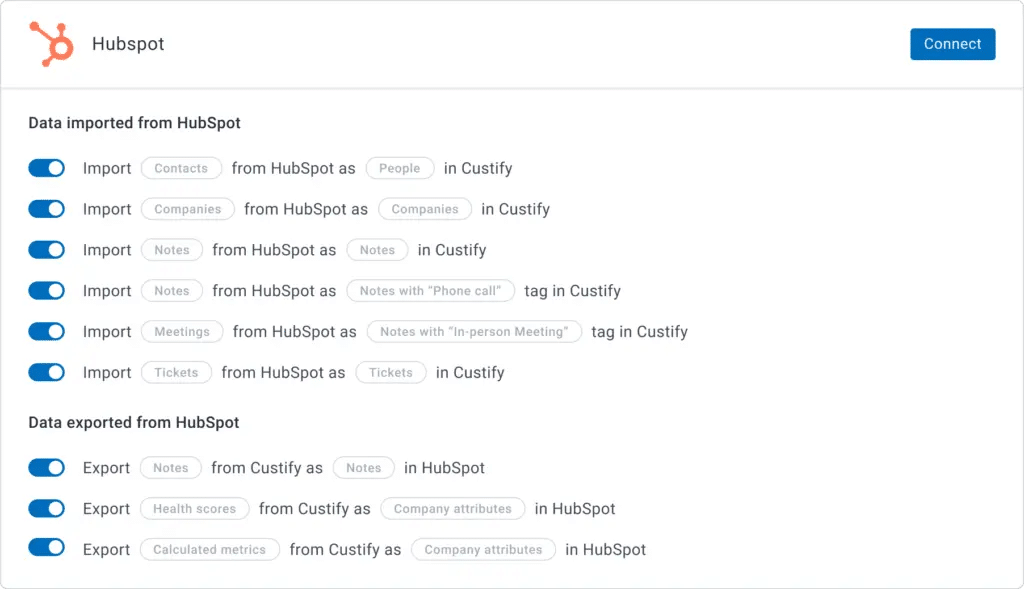
4. Do I need a CSP if I already use Salesforce/HubSpot?
Yes. Salesforce and HubSpot are both CRM platforms at heart. While both companies have expanded the list of features they offer, their platforms cannot replace having a dedicated CSP. Fortunately, Custify integrates with both seamlessly.
5. What are some best practices for migrating customer data to a new CS platform?
There are several ways in which that can be done, but in the end, it all depends on the way that you are storing your data. Custify covers several options to ensure a smooth transition of data into the platform, such as:
- native integration with your CRM
- data warehouses/datalakes
- API connections
- CSV imports
- connections with other transfer facilitating tools, such as Zapier or Make
The most important thing to consider is ensuring the presence of unique identifiers in all the systems that need to be integrated with your CSP in order to ensure a smooth data transition.
An additional, but very important part would be to make sure the data is accurate in all the systems. Before migrating customer data, ensure there are:
- no duplicates
- no different names for companies
- no different unique IDs
– Andreea Cheregi, Senior Customer Success Manager, Custify
6. How do I migrate my customer success workflows from Salesforce CRM into Custify?
We have a native integration with Salesforce that will ensure a seamless transition of your data into our systems. Regarding the workflows, these can be shared with your assigned CSM from Custify, and they will make sure to help you implement the same into your Custify account.
– Andreea Cheregi, Senior Customer Success Manager, Custify
CRM? CSP? Both?
In the end, there’s no two ways about it – you will need both a CRM and a CSP. While they serve different functions, those functions are often connected:
- A CRM can help CSMs pass over churn data and help Sales qualify existing leads.
- A CSP can help Sales organize handoffs so all the important data about a new customer makes it over to the CSM.
For a full concierge onboarding of your CSP, complete with full CRM integration and workflow migration, sign up for a 15-minute call with our team. Our CSMs are eager to learn more about their next exciting project!

